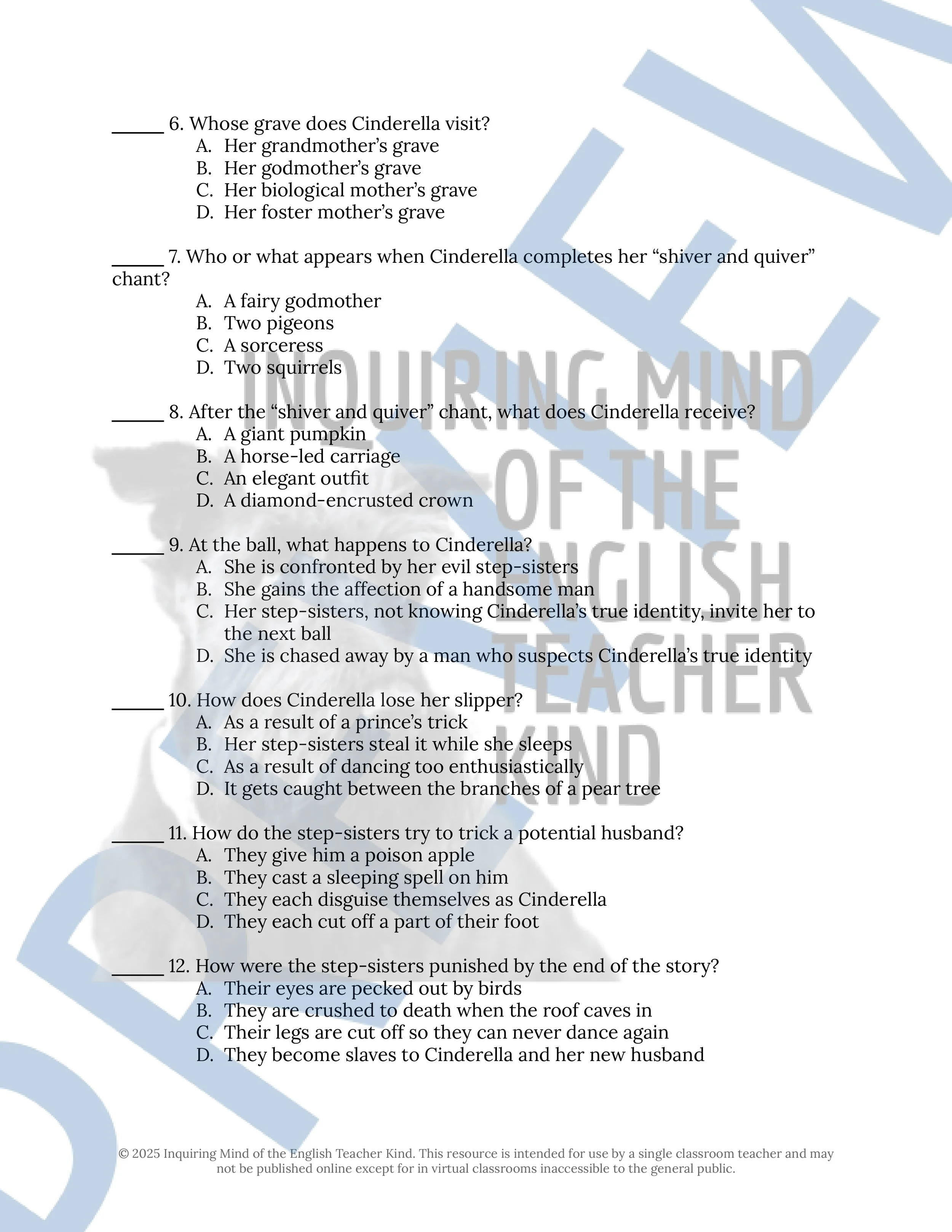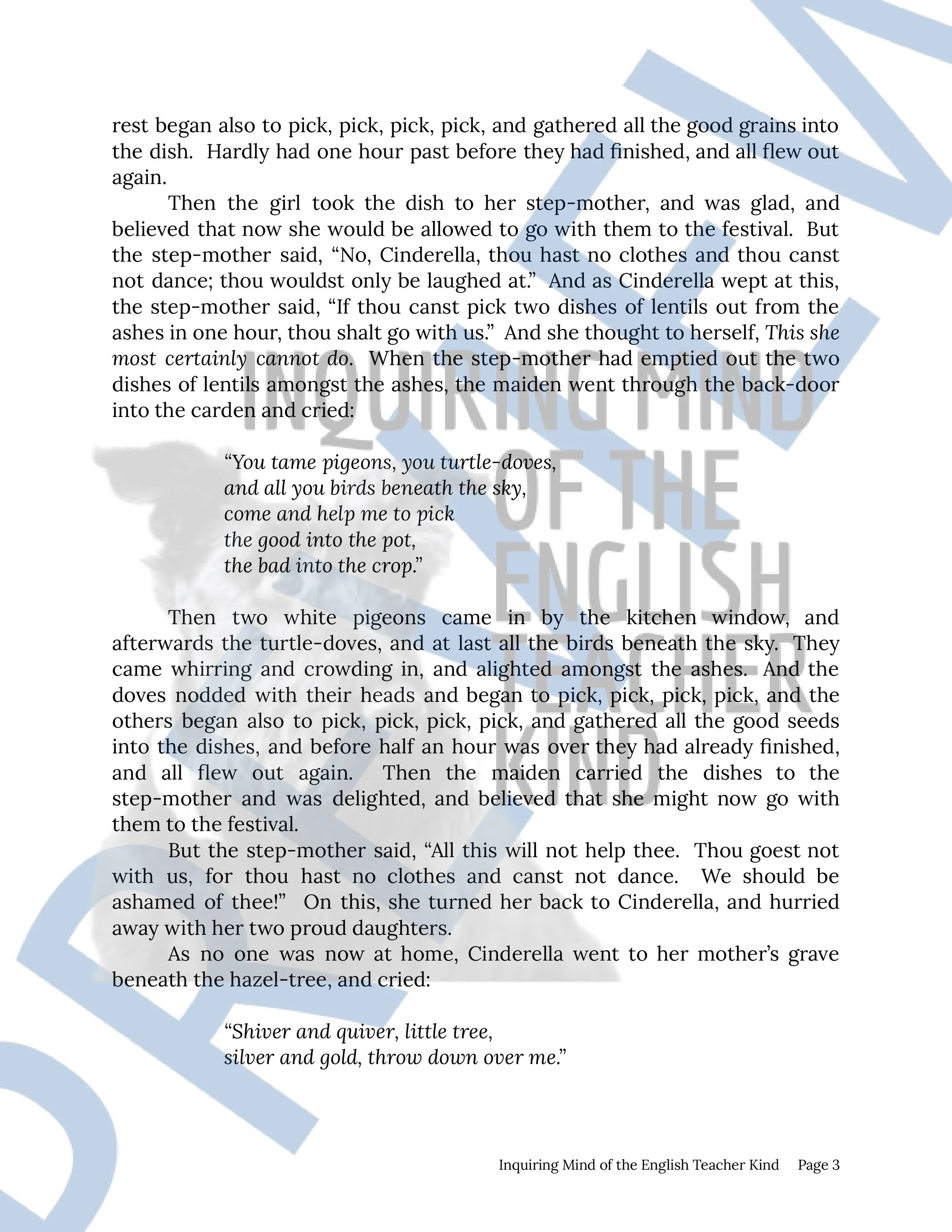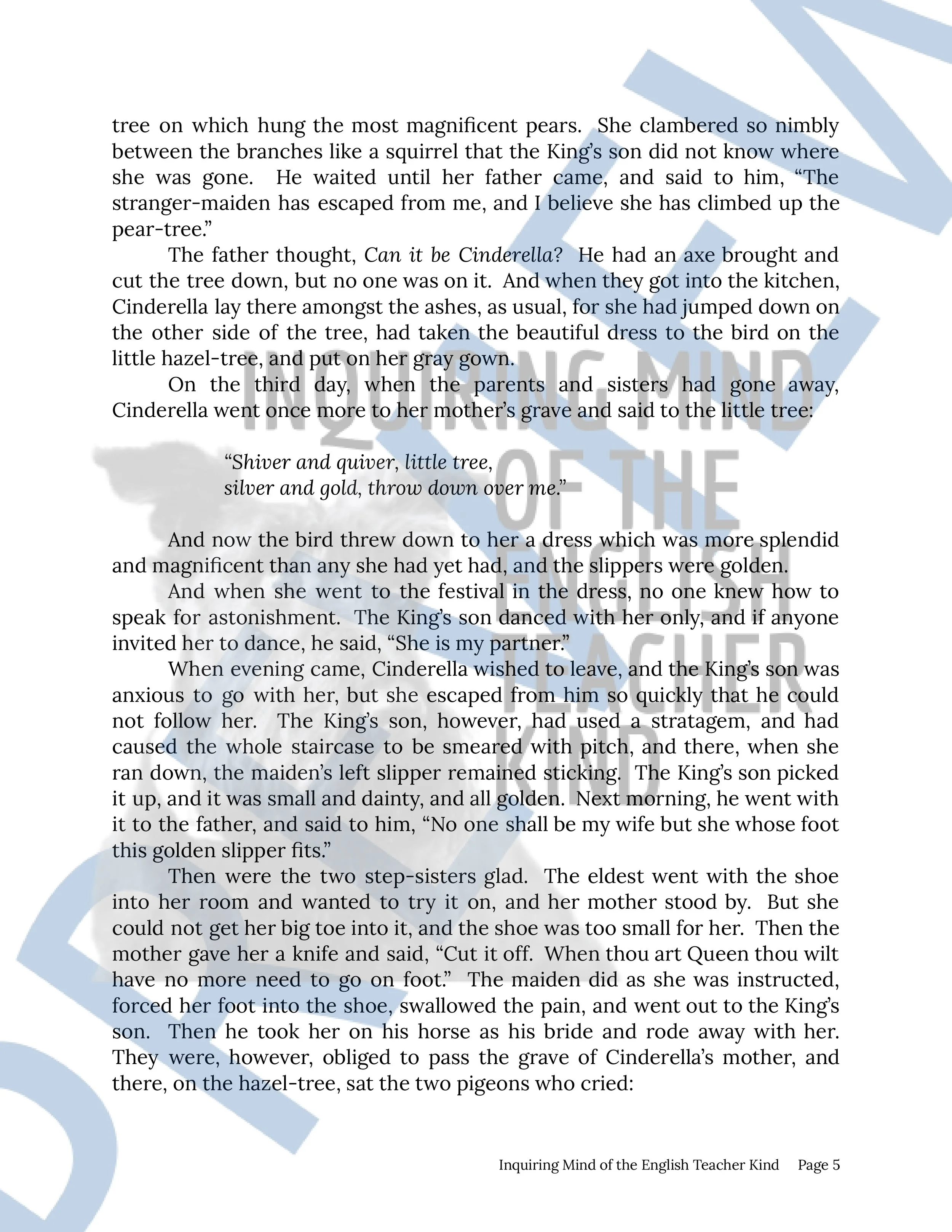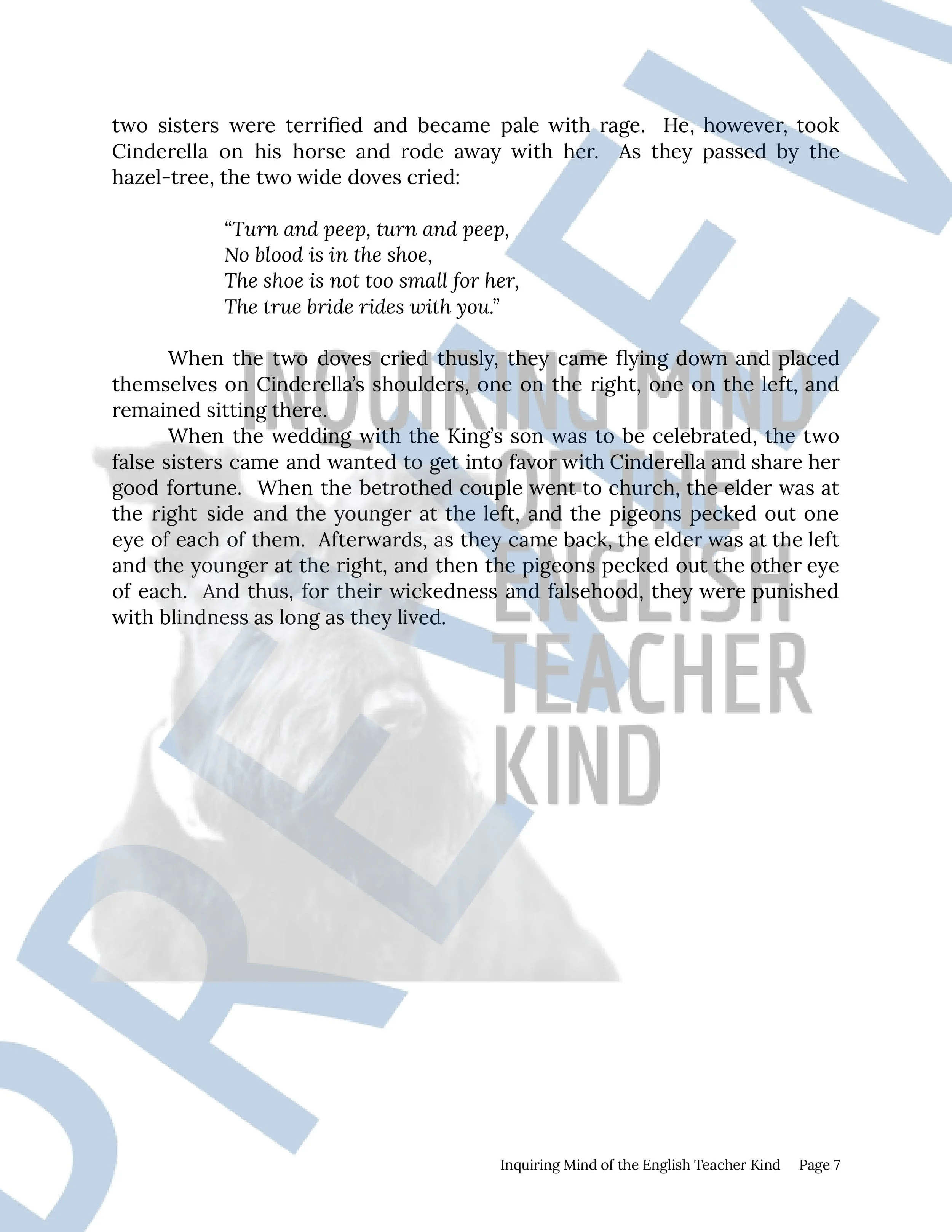 Image 1 of 16
Image 1 of 16

 Image 2 of 16
Image 2 of 16

 Image 3 of 16
Image 3 of 16

 Image 4 of 16
Image 4 of 16

 Image 5 of 16
Image 5 of 16

 Image 6 of 16
Image 6 of 16

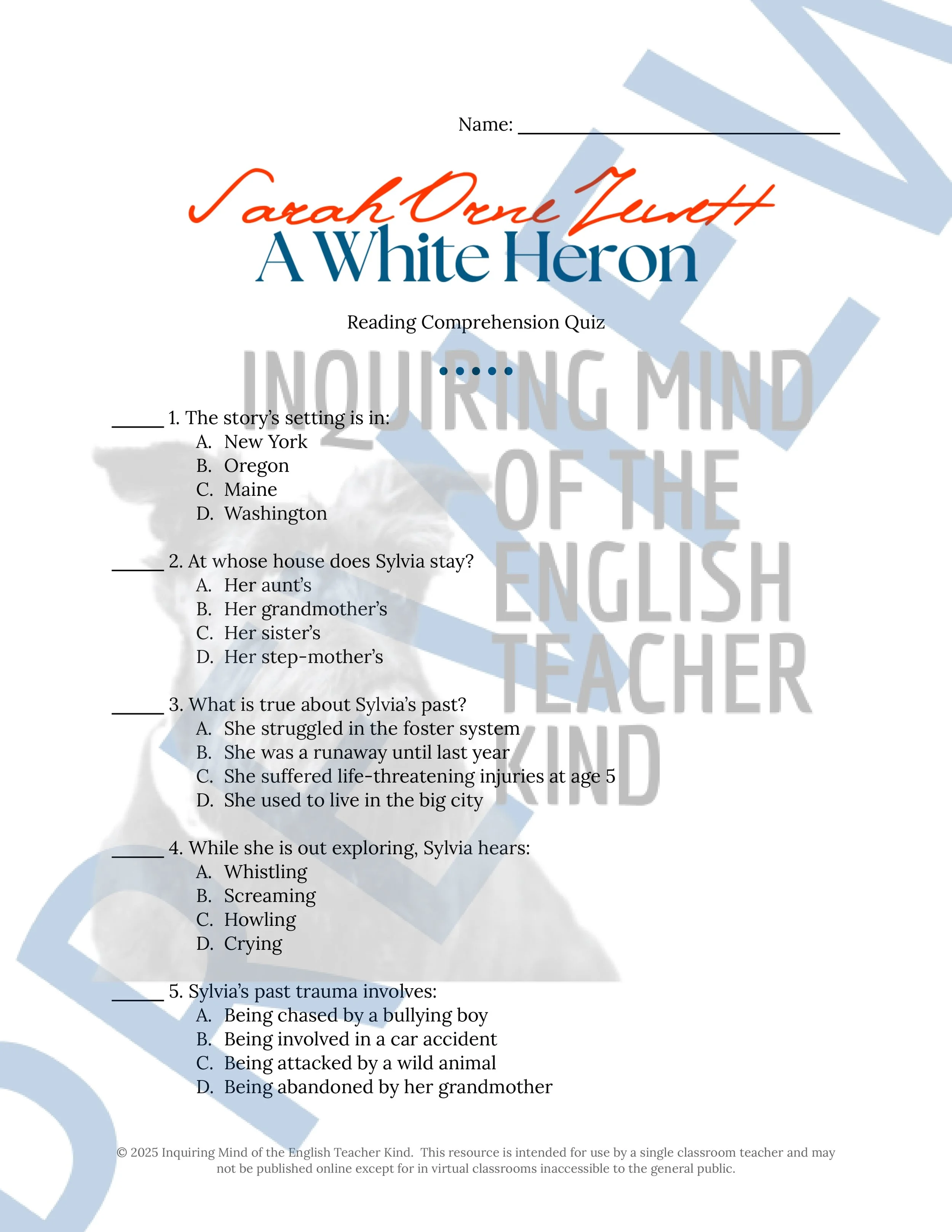 Image 7 of 16
Image 7 of 16

 Image 8 of 16
Image 8 of 16

 Image 9 of 16
Image 9 of 16

 Image 10 of 16
Image 10 of 16

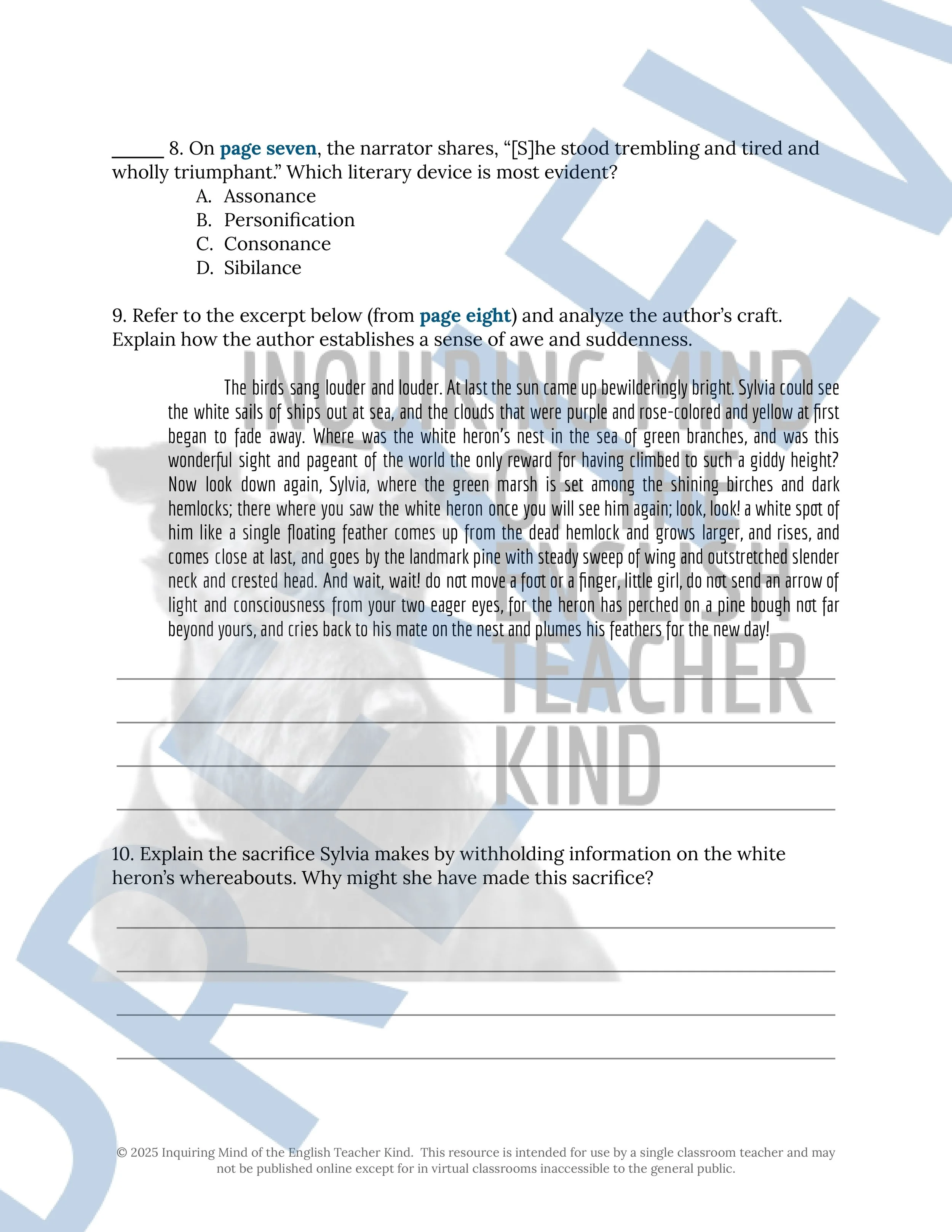 Image 11 of 16
Image 11 of 16

 Image 12 of 16
Image 12 of 16

 Image 13 of 16
Image 13 of 16

 Image 14 of 16
Image 14 of 16

 Image 15 of 16
Image 15 of 16

 Image 16 of 16
Image 16 of 16

















"A White Heron" by Sarah Orne Jewett Quiz, Analysis Worksheet, Vocabulary Activities, and Sub Plans
Help high school students go beyond general reading comprehension and practice close reading analysis skills while engaging with the short story "A White Heron" by Sarah Orne Jewett. A bell-ringer writing prompt, a plot-based quiz, a close reading worksheet, a vocabulary application activity, a crossword puzzle, a word search game, a low-prep lesson plan template with pre-filled learning targets and agenda items, and answer keys are included. Materials are delivered in editable Word Document and printable PDF formats. (Alternatively, a Google Drive bundle option is available.) By engaging with these materials, students will:
Identify what the text states explicitly and implicitly
Define words and phrases as they are used in the text
Consult reference materials in order to learn and verify word meanings
Choose the most proper application of words as they are used in sentences
Discern narrative techniques used to convey a sense of immediacy and awe
Determine the tone of a given passage
Explore how complex characters think, behave, develop, and interact
Compare and contrast two characters
Conduct brief research to articulate the significance of the protagonist's name
Apply knowledge of literary devices including consonance, simile, and anthropomorphism
Support claims and inferences with sound reasoning and relevant evidence
Write about fiction with clarity, accuracy, and precision
Additional materials are available for teaching young adult fiction:
Help high school students go beyond general reading comprehension and practice close reading analysis skills while engaging with the short story "A White Heron" by Sarah Orne Jewett. A bell-ringer writing prompt, a plot-based quiz, a close reading worksheet, a vocabulary application activity, a crossword puzzle, a word search game, a low-prep lesson plan template with pre-filled learning targets and agenda items, and answer keys are included. Materials are delivered in editable Word Document and printable PDF formats. (Alternatively, a Google Drive bundle option is available.) By engaging with these materials, students will:
Identify what the text states explicitly and implicitly
Define words and phrases as they are used in the text
Consult reference materials in order to learn and verify word meanings
Choose the most proper application of words as they are used in sentences
Discern narrative techniques used to convey a sense of immediacy and awe
Determine the tone of a given passage
Explore how complex characters think, behave, develop, and interact
Compare and contrast two characters
Conduct brief research to articulate the significance of the protagonist's name
Apply knowledge of literary devices including consonance, simile, and anthropomorphism
Support claims and inferences with sound reasoning and relevant evidence
Write about fiction with clarity, accuracy, and precision
Additional materials are available for teaching young adult fiction:


Preview this resource:
Help high school students go beyond general reading comprehension and practice close reading analysis skills while engaging with the short story "A White Heron" by Sarah Orne Jewett. A bell-ringer writing prompt, a plot-based quiz, a close reading worksheet, a vocabulary application activity, a crossword puzzle, a word search game, a low-prep lesson plan template with pre-filled learning targets and agenda items, and answer keys are included.





































































































































